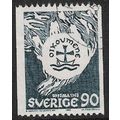Bird - Puffins in Nova Scotia Canadian Postcard
- Condition : Used
- Dispatch : 2 Days
- Brand : None
- ID# : 34043008
- Quantity : 1 item
- Views : 302
- Location : United Kingdom

- Seller : justthebook (+1703)
- Barcode : None
- Start : Mon 15 Nov 2010 00:11:21 (BST)
- Close : Run Until Sold
- Remain : Run Until Sold
More Listings from This Seller view all
Seller's Description
- Postcard
- Picture / Image: Common (Atlantic) Puffin - Canadian card.
- Publisher: The Book Room, Halifax, Nova Scotia
- Postally used: yes
- Stamp: UK 1st class stamp
- Postmark(s): UK 2007
- Sent to: Icklesham, East Sussex
- Notes & Key words:
------------------------------------------------
Postage & Packing:
UK (incl. IOM, CI & BFPO): 99p
Europe: £1.60
Rest of world (inc. USA etc): £2.75
No additional charges for more than one postcard. You can buy as many postcards from me as you like and you will just pay the fee above once. (If buying postcards with other things such as books, please contact or wait for invoice before paying).
Payment Methods:
UK - PayPal, Cheque (from UK bank) or postal order
Outside UK: PayPal or Google Checkout ONLY please. NO non-UK currency checks or money orders (sorry).
NOTE: All postcards are sent in brand new stiffened envelopes which I have bought for the task. These are specially made to protect postcards and you may be able to re-use them. In addition there are other costs to sending so the above charge is not just for the stamp!
----------------------------------------------
Text from the free encyclopedia WIKIPEDIA may appear below to give a little background information:
*************
The Atlantic Puffin (Fratercula arctica) is a seabird species in the auk family. It is a pelagic bird that feeds primarily by diving for fish, but also eats other sea creatures, such as squid and crustaceans. Its most obvious characteristic is its brightly coloured beak during the breeding seasons. Also known as the Common Puffin, it is the only puffin species which is found in the Atlantic Ocean. The curious appearance of the bird, with its colourful huge bill and its striking piebald plumage, has given rise to nicknames such as "clown of the ocean" and "sea parrot".
The Atlantic Puffin is 28–34 cm (11-13.5 in) in length, with a 50–60 cm (20-24 in) wingspan. The male is generally slightly larger than the female, but they are coloured alike. This bird is mainly black above and white below, with gray to white cheeks and red-orange legs. The bill is large and triangular, and during the breeding season is bright orange with a patch of blue bordered by yellow at the rear.[1] The characteristic bright orange bill plates grow before the breeding season and are shed after breeding. The bills are used in courtship rituals, such as the pair tapping their bills together.[2] During flight, it appears to have grey round underwings and a white body; it has a direct flight low over the water. The related Horned Puffin (Fratercula corniculata) from the North Pacific looks very similar but has slightly different head ornaments.
The Atlantic Puffin is typically silent at sea, except for soft purring sounds it sometimes makes in flight. At the breeding colonies the birds make a deep growl
This species breeds on the coasts of northern Europe, the Faroe Islands, Iceland and eastern North America, from well within the Arctic Circle to northern France and Maine. The winter months are spent at sea far from land - in Europe as far south as the Mediterranean, and in North America to North Carolina.
About 95% of the Atlantic puffins in North America breed around Newfoundland's coastlines. The largest puffin colony in the western Atlantic (estimated at more than 260,000 pairs) can be found at the Witless Bay Ecological Reserve, south of St. John's, Newfoundland and Labrador.[3]
Puffin viewing has also started to become popular in Elliston Newfoundland, previously named Bird Island Cove, located near Trinity. Here, puffins have been known to be tame enough to get even 2 or 3 feet away from them.
Predators of the Atlantic Puffin include the Great Black-backed Gull (Larus marinus), the Great Skua (Stercorarius skua), and similar-sized species, which can catch a puffin in flight, or pick off one separated from the colony. Smaller gull species like the Herring Gull (L. argentatus) which are hardly able to bring down a healthy adult puffin, take eggs or recently hatched chicks, and will also steal fish.
More recent population declines may have been due to increased predation by gulls and skuas, the introduction of rats, cats, dogs and foxes onto some islands used for nesting, contamination by toxic residues, drowning in fishing nets, declining food supplies, and climate change.[6]
On the island of Lundy the number has decreased dramatically in recent years (the 2005 breeding population was estimated to be only two or three pairs) as a consequence of depredations by black rats (recently eliminated) and possibly also as a result of commercial fishing for sand eels, the puffins' principal prey.
On the other hand, puffin numbers increased considerably in the late twentieth century in the North Sea, including on the Isle of May and the Farne Islands. Numbers have been increasing by about 10% per year in recent years. In the 2006 breeding season, about 68,000 pairs were counted on the Isle of May. However, Iceland has many times as many breeding pairs with the Puffin - lundi in Icelandic - the most populous bird on the island. In 2008 declines were reported in the Farne Islands and Isle of May colonies.[7]
Reintroduction projects have taken place on a number of islands, including one on the coast of Maine titled Project Puffin, and these have given local boosts to some Puffin populations.
Since the Atlantic Puffin spends its winters on the open ocean, it is susceptible to human impacts such as oil spills. If an accidental oil spill occurs and pelagic birds are exposed, toxins are inhaled or ingested which leads to kidney and liver damage. This damage can contribute to a loss of reproductive success and damage to developing embryos.[5]
Oil spills may also have indirect effects. The Atlantic Puffin and other pelagic birds are excellent bioindicators of the environment because they are near the top of the food chain in the ocean. Since the primary food source for Atlantic Puffins is fish, there is a great potential to bioaccumulate heavy metals from the environment. Heavy metals enter the environment through oil spills - such as the Prestige oil spill on the Galician coast - or from other natural or anthropogenic sources. In order to determine the effects on pelagic birds such as the Atlantic Puffin, quantifiable measurements must be taken. In the field, scientists obtain contaminant measurements from eggs, feathers or internal organs.[8]
Since the Atlantic Puffin gets the majority of its food from diving it is important that there is an ample supply of resources and food. Different environmental conditions such as tidal cycle, upwellings and downwellings contribute to this abundance. In a study published in 2005[9] it was observed that Atlantic Puffins were associated with areas of well-mixed water below the surface. This study implies consequences for the species if impacts of global warming lead to an alteration of tidal cycles. If these cycles are modified too much, it is probable that the Atlantic Puffin will have a difficult time locating food resources. Another consequence of an increase in temperature could be a reduction in the range of the Atlatic Puffin, as it is only able to live in cool conditions and does not fare overly well if it has to nest in barren, rocky places, and an increase in temperature could thus squeeze the zone of puffin-suitable habitat as warmer biotopes expand from the equator but the polar regions remain barren due to lack of historical accumulation of topsoil.
In popular culture
- The Atlantic Puffin is the provincial bird of Newfoundland and Labrador.[10]
- The Norwegian municipality of Værøy has an Atlantic Puffin in its coat-of-arms.
- The island of Lundy's name is derived from the Norse lunde for the puffins that nest on the island. Puffins also appeared on the coins and stamps of the island and a value expressed in 'Puffins'.
- In August 2007, the Atlantic Puffin was proposed as the official symbol of the Liberal Party of Canada by its deputy leader Michael Ignatieff, after he observed a colony of these birds and became fascinated by their behaviour.[11]
Listing Information
| Listing Type | Gallery Listing |
| Listing ID# | 34043008 |
| Start Time | Mon 15 Nov 2010 00:11:21 (BST) |
| Close Time | Run Until Sold |
| Starting Bid | Fixed Price (no bidding) |
| Item Condition | Used |
| Bids | 0 |
| Views | 302 |
| Dispatch Time | 2 Days |
| Quantity | 1 |
| Location | United Kingdom |
| Auto Extend | No |



 for 1 item(s)
for 1 item(s)















